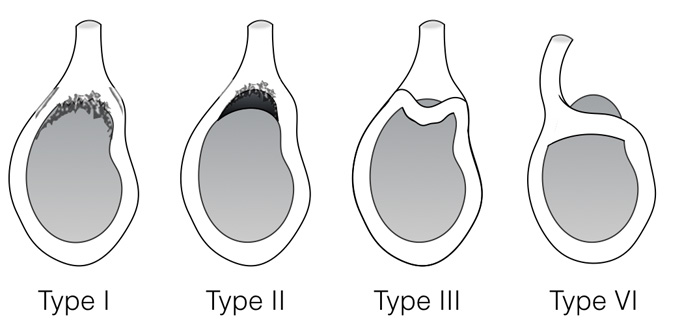SLAP Tears
What is a SLAP tear?
A SLAP tear, or Superior Labrum Anterior and Posterior tear, is a common type of shoulder injury. The labrum is a cup-shaped ring of tissue that lines and supports the ball and socket of the shoulder joint. The head of the shoulder, or ball, is much larger than the glenoid socket (which is a flat surface). The surrounding labrum serves as a protection for additional shoulder stability. Many important shoulder ligaments also attach to the labrum. In a SLAP injury, the top part of the labrum is injured which serves as the biceps tendon attachment. This complex is commonly injured in athletes and can be a common source of pain.

What are the symptoms of SLAP tears?
In many cases, a SLAP tear does not hurt all the time. The pain usually happens when you use your shoulder to complete a task, particularly any overhead activity. You may also notice a feeling of catching, locking, or grinding in the shoulder, along with loss of shoulder strength. Your shoulder range of motion may be decreased due to pain.
Who gets SLAP tears?
Anyone can develop a SLAP tear, however athletes involved in sports that require repetitive overhead activities are more likely to develop a SLAP tear, such as baseball pitchers and volleyball players. People who experience a traumatic event, such as falling down a flight of stairs or a shoulder dislocation, can also have a SLAP tear.
What causes SLAP tears?
There are three ways to tear your labrum: (1) overuse, (2) injury, and (3) wear and tear. Overuse can occur in anyone who uses their shoulder to make the same motion over and over can tear their labrum. This can be repeating an overhead motion at work or a weightlifter who jerks a barbell up again and again. Injuries causing a labrum SLAP tear can happen when you fall and stretch out your arm to break the fall. Finally, wear-and-tear occurs slowly to the labrum over time, resulting in tearing or fraying of the labrum. This is more common in people over the age of 40, when your cartilage becomes more brittle with age.
How is a SLAP tear diagnosed?
A SLAP tear is diagnosed through a thorough combination of history, physical exam, and medical imaging. Dr. Chahla, a renowned shoulder specialist from Chicago, IL will talk with you in detail about your symptoms and when they first began, as well as any recent injuries that may have caused your shoulder pain. Any work activities or sports that aggravate your shoulder are also important to mention along with the location of your pain.
During the physical exam, Dr. Chahla will check the range of motion, strength, and stability of your shoulder. He may perform specific tests by placing your arm in different positions to reproduce your symptoms. The results of these tests will help decide if additional testing or imaging of your shoulder is required. An MRI with or without contrast is the best imaging test to show soft tissue tears like a SLAP tear. An X-ray may also be ordered to make sure there are no other problems in your shoulder, such as arthritis or factures.
How do you treat SLAP tears?
In many cases, the initial treatments for a SLAP tear are nonsurgical. Medications like ibuprofen and naproxen (otherwise known as nonsteroidal anti-inflammatory medications, or NSAIDs) are helpful to reduce pain and swelling. Physical therapy exercises can help improve shoulder movement, scapular mechanics and increase shoulder strength. Flexibility and range-of-motion exercises involve stretching the shoulder capsule, which is the strong connective tissue that surrounds the joint. These exercises can also help relieve pain and prevent further injury.
Dr. Chahla may advise surgery if your pain is not improving with medications or physical therapy. Arthroscopy is the type of surgery most commonly used to treat SLAP tears. This involves inserting a small camera into the shoulder joint and using small surgical instruments to repair the SLAP tear or to perform a biceps tenodesis to decrease the tension on the labrum. There are many different methods to repair a SLAP tear. Dr. Chahla will work with you to decide the best treatment option based on the type of SLAP tear you have, as well as your age, activity level, and presence of any other injuries.
How can SLAP tears be prevented?
While acute SLAP tears due to trauma or injury can be difficult to prevent, chronic tears can be prevented by maintaining balance within the shoulder. This means performing exercises that strength the muscles around the shoulder blade and stretches that focus on preventing a tight shoulder. It is important for athletes to properly warm up before any practice or competitive game to avoid injuries during play.
At a Glance
Dr. Jorge Chahla
- Triple fellowship-trained sports medicine surgeon
- Performs over 500 surgeries per year
- Assistant professor of orthopedic surgery at Rush University
- Learn more


